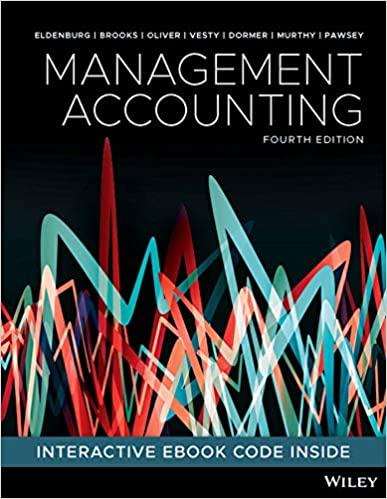Australian fashion designer Sean Ashby commenced his mens swimwear and clothing business aussieBum in 2001. A keen
Question:
Australian fashion designer Sean Ashby commenced his men’s swimwear and clothing business aussieBum in 2001. A keen swimmer and surfer, he was unable to find a good pair of men’s cossies and used his life savings of $20 000 to make a series of prototypes, buy materials and commence manufacturing in Australia. Despite rejection from local retailers who did not see the potential for aussieBum to compete with international brands, Ashby has proven critics wrong. He had no choice but to take his business online, with instant exposure to the international market. It now takes thousands of orders a day.
Since the company’s inception, Ashby says that aussieBum has ‘taken on its own little cult revolution’, with celebrities such as Ewan McGregor, Billy Connolly and David Beckham fans of the aussieBum brand. Even Kylie Minogue’s male dancers wore aussieBum cossies in the film clip for her song ‘Slow’. The marketing thrust behind Ashby’s aussieBum is to live the dream — ‘the dream to be independent and present our gear in a way that gets noticed. We don’t apologise for pushing the boundaries . . . We have a saying at aussieBum — If you doubt yourself, wear something else’.6 The company doubled in size every year in its first five years and continued to grow by 20 per cent every quarter. By 2018, aussieBum had an average annual turnover of between $17 million and $20 million, and 90 per cent of its customers were international. The aussieBum brand now takes pride of place in stores such as Selfridges in the UK; Brown Thomas in Ireland; La Maison Stores in Canada; Alpha Male in Melrose Drive, Los Angeles; KaDeWa in Germany; as well as others in Spain, The Netherlands, Sweden, Poland and Russia. As well as direct department store sales, aussieBum’s internet retail orders are booming, with aussieBum being distributed to more than 70 countries. It now has over 200 000 consumers ordering direct via its custom built e-commerce site.
Most of the raw materials are sourced from Italy and China. By manufacturing in Australia, aussieBum hopes to promote Australia’s culture and relaxed lifestyle as well as eliminate restrictions that might come with outsourcing production to other countries. Moreover, producing locally (through independent manufacturers) provides flexibility and a reduced timeframe in getting new products to market. With a heavy emphasis on innovative product design, aussieBum pays close attention to the design phase of the product process.
Two examples of aussieBum’s flexibility and innovative approach to product development and marketing are worthy of note. First, it was able to capitalise on the consumer backlash against competitor Bonds when that company transferred more of its manufacturing offshore. Ashby estimates that aussieBum’s sales grew by at least 40 per cent as a result. Second, aussieBum was able to achieve continued growth during the global financial crisis. The company continues to avoid debt and own all its assets outright.7
Required
(a) With reference to the information provided, distinguish between structural and executional cost drivers.
(b) Illustrate and describe the industry and organisational value chain in which aussieBum operates.
(c) Classify aussieBum’s likely strategy as low cost or product differentiation. Explain.
(d) Classify aussieBum’s organisational structure as centralised or decentralised. Explain.
(e) With reference to disruptive innovation, do you consider aussieBum to be a disruptor to the traditional garment industry value chain? Discuss why or why not.
Step by Step Answer:

Management Accounting
ISBN: 9780730369387
4th Edition
Authors: Leslie G. Eldenburg, Albie Brooks, Judy Oliver, Gillian Vesty, Rodney Dormer, Vijaya Murthy, Nick Pawsey





